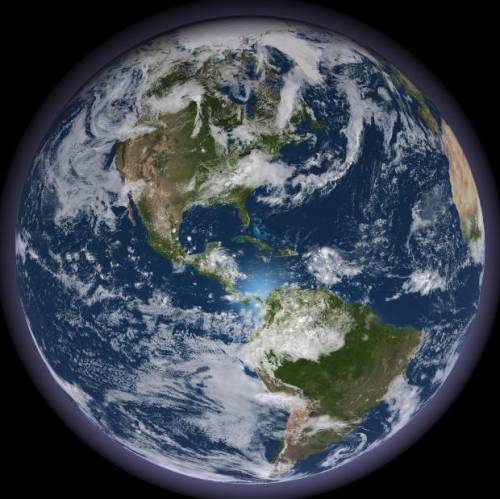 Close Topic Options
Close Topic OptionsHistory of the Earth - Our Spinning Planet
History Earth Spinning Planet - Sciences, Education, Art, Writing, UFO - Posted: 9th May, 2017 - 3:50pm
History of the Earth - Our Spinning Planet
Earth's Core Spinning Faster Than Crust
AP - The giant iron ball at the center of the Earth appears to be spinning a bit faster than the rest of the planet.
Ref. Source
Image from MorgueFile public domain.

History of the Earth - Our Spinning Planet (Hover)
Planet Spinning - Earth the History
I will never stop being amazed by the planet we live on. Its really quit interesting that our crust spins slower than the center. While it makes sense to some extent, I would have thought that eventually it would equalize and, since the crust floats on lava, which also rotates, that they would eventually even out and be spinning at the same rate. I wonder how it is possible that the crust never speeds up to reach the same rotation speed of the core?
History of the Earth - Our Spinning Planet UFO & Writing Art Education Sciences
| QUOTE |
| Since the planet is divided into 360 degrees of longitude, a core spinning one-quarter to one-half degree faster than the outer surface could take between 700 and 1,400 years to get one full revolution ahead. But Song said in a telephone interview that he expected that rate to vary over time and sometimes the core might be spinning slower than the rest of the planet. |
According to what they say it looks like the core is spinning sometimes slower ... maybe sometimes the 2 speeds are equal. What surprised me was to learn that the core is surrounded by 4200 miles fluid outer core (under the planets surface). I never thought it's so big.
Planet Spinning - Earth the History
Map of flow within the Earth's mantle finds the surface moving up and down 'like a yo-yo'
Researchers have compiled the first global set of observations of flow within the Earth's mantle -- the layer between the crust and the core -- and found that it is moving much faster than has been predicted. Ref. Source 6r.
Planet Spinning - Earth the History
Earth probably began with a solid shell
Plate tectonics -- a defining feature of modern Earth and the driving force behind earthquakes, volcanoes and mid-ocean spreading ridges -- did not start until later in Earth's history, new research suggests. The work is the latest salvo in a long-standing geological debate: did plate tectonics start right away, or did Earth begin with a solid shell covering the entire planet? The new results suggest the latter. Ref. Source 2l.
History of the Earth - Our Spinning Planet
Earth was barren, flat and almost entirely under water 4.4 billion years ago
Scientists say the early Earth was likely to be barren, flat and almost entirely under water with a few small islands, following their analysis of tiny mineral grains as old as 4.4 billion years. Ref. Source 9f.
History the Earth - Spinning Planet
I am not buying this at all but I have not really studies what the earth was like 4 billion years ago. I know when the earth was formed a collision with another object about the size of the earth was then caused us to set up the spin and a fragment of this collision created the moon. From there repeated collisions with comments and meteors brought water to this planet. Was it enough to cover the earth? That I am not sure.
History the Earth - Spinning Planet Sciences Education Art Writing & UFO
I don't know the truth of this or not. KN, could easily have the right of this. That said, I find it fascinating how these scientists gather their data and come to their conclusions. This is like a pathologist at a crime scene, sifting through clues to come up with a conclusion.
 TOPIC: History of the Earth - Our Spinning Planet
TOPIC: History of the Earth - Our Spinning Planet Earth's core and mantle
Earth's core and mantle